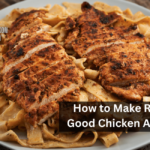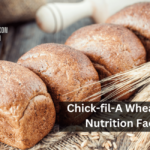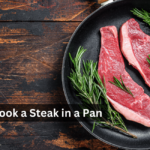Steak, often regarded as the epitome of carnivorous indulgence, is a culinary delight that always stays in style. While grilling and sous-vide methods have their merits, a classic technique has stood the test of time – pan-searing. Pan-searing a steak allows for precise control over the cooking process and results in a beautifully caramelized crust and a juicy, flavorful interior. This detailed tutorial will dissect the science and techniques of making a perfectly browned steak in a skillet. Read on to learn how to pan-sear a perfect steak, whether you’re a rookie in the kitchen or a seasoned veteran.
Choosing the Perfect Steak
Before you even think about heating your pan, selecting the proper Steak is essential. The choice of steak cut, thickness, quality, and aging play pivotal roles in achieving a perfect pan-seared steak.
1. Types of Steak Cuts
Steak cuts can be broadly categorized into three types: tender, lean, and moderately tender. Each cut has its unique flavor profile and texture, making choosing the one that suits your preferences and cooking method crucial.
- Tender Cuts:
- Filet Mignon: Renowned for its buttery texture, this cut is incredibly tender but lacks the intense flavor of fattier cuts.
- Ribeye: Well-marbled and rich in flavor, the ribeye is a favorite among steak enthusiasts.
- Strip Steak: This cut, which goes by a few other names, is recognized for its softness and powerful meaty flavor.
- Tenderloin: This includes cuts like Chateaubriand and Tournedos. Exceptionally tender but milder in taste.
- Lean Cuts:
- Sirloin: A lean and economical option with a moderately beefy flavor.
- Flank Steak: Lean and fibrous, best for marinating and slicing thinly.
- Moderately Tender Cuts:
- T-Bone and Porterhouse: These cuts combine both tenderloin and strip steak portions, offering a mix of tenderness and flavor.
- Flat Iron Steak: Relatively tender with a unique flavor profile.
- Hanger Steak: A flavorful cut often likened to skirt Steak.
Your choice of cut will dictate the cooking time and method. For pan-searing, we recommend ribeye, strip steak, tenderloin, or similar well-marbled cuts for maximum flavor and tenderness.
2. Steak Thickness
The Steak’s thickness is as important as the cut itself. The ideal thickness for steaks is between 1.5 and 2 inches (3.8 and 5 cm). Steaks of a greater thickness can be seared more thoroughly on the exterior without risking overcooking the interior.
3. Steak Quality and Marbling
Steak is an item where quality really counts. Marbling refers to the thin streaks of intramuscular fat that melt during cooking to improve flavor and juiciness. Thus, steaks with visible marbling are what you want to look for. Prime and Choice grades are usually the best options for pan-searing, offering the ideal balance of tenderness and marbling.
4. Aging and Tenderizing
Aged steaks are prized for their improved tenderness and intensified flavor. Dry aging produces more concentrated flavors when steaks are stored in a controlled environment for weeks or months. Wet aging in vacuum-sealed bags also tenderizes the meat, but to a lesser extent.
When selecting a steak, ask your butcher about the aging process. If available, opt for aged cuts to elevate your pan-seared steak experience.
Preparing Your Steak
Now that you’ve chosen the perfect Steak, it’s time to prepare it for pan-searing. Proper seasoning and temperature management are crucial for achieving the desired results.
1. Seasoning
Seasoning your Steak is more than just a sprinkle of salt and pepper; it’s an art. Here’s how to do it right:
- Use Kosher Salt: The coarse texture of kosher salt adheres better to the Steak’s surface, helping to draw out moisture and form a flavorful crust. Aim for about 1/2 to 1 teaspoon of salt per pound of meat.
- Freshly Ground Black Pepper: Grind black pepper directly onto the Steak for a robust, aromatic flavor. For added depth, you can also incorporate other seasonings like garlic powder, onion powder, or smoked paprika.
- Seasoning Time: Apply the seasoning at least 40 minutes before cooking, allowing the salt to penetrate the meat. This dry-brining process enhances flavor and tenderness. For a deeper flavor infusion, season the Steak the night before and let it rest in the refrigerator, uncovered.
2. Bringing the Steak to Room Temperature
One of the critical steps to achieving a perfectly cooked pan-seared steak is ensuring that it cooks evenly from edge to center. To do this, you should allow your Steak to come to room temperature before cooking.
- Take the Steak out of the fridge 30-60 minutes before you plan to cook it, depending on how thick it is. It takes longer for thicker cuts to heat up.
- Place the Steak on a plate or a wire rack to allow air circulation. This gentle warming of the Steak reduces the temperature gradient within, ensuring even cooking.
3. Patting Dry
Before searing your Steak, ensure it’s scorched. Moisture on the Steak’s surface can hinder the formation of a beautiful crust, so follow these steps to remove excess water:
- Use paper towels to blot the Steak thoroughly, absorbing any surface moisture.
- Allow the Steak to air dry for a few minutes. This additional drying time will improve the sear.
Selecting the Right Pan
Choosing the right pan is crucial for pan-searing success. While various pans can be used, certain materials work better than others.
1. Cast Iron Skillet
A cast iron skillet is the quintessential choice for pan-searing Steak. Here’s why:
- Heat Retention: Cast iron retains and distributes heat evenly, providing a consistent cooking surface.
- High-Temperature Tolerance: Cast iron can withstand high cooking temperatures, making it ideal for achieving a searing hot surface.
- Improved Flavors: Cooking steak in a well-seasoned cast iron skillet imparts a unique flavor profile, often called “iron flavor.”
2. Stainless Steel Pan
When searing Steak, stainless steel pans are just as good as cast iron. They provide a few benefits:
- Durability: Stainless steel pans are resistant to rust and staining, making them low-maintenance.
- Even Heating: Quality stainless steel pans often have an aluminum or copper core that ensures even heating.
- Versatility: Stainless steel pans can be used for various cooking methods and are particularly suitable for pan sauces.
3. Non-Stick Pan
While non-stick pans are not typically recommended for pan-searing Steak due to their lower heat tolerance, they can be used for lean cuts like sirloin or when you prefer a minimalistic approach. If using a non-stick pan, avoid overheating it, as it can release toxic fumes.
This guide will focus on using a cast iron skillet for the best pan-seared steak experience.
Preheating the Pan
Properly preheating your pan is the foundation of achieving a flawless sear. It ensures that the Steak cooks evenly and develops a beautiful crust.
1. The Importance of Proper Preheating
- Even Cooking: The Steak will cook evenly if the cooking surface is preheated to the proper temperature.
- Searing Action: A hot pan encourages the Maillard reaction, a chemical process responsible for browning and enhancing flavor.
- Crust Development: A well-preheated pan promotes the formation of a delicious crust while minimizing the risk of sticking.
2. Oil Selection and Application
Before preheating, you’ll need to add oil to the pan. Here’s how to do it correctly:
- Choose the Right Oil: Opt for a high smoke point oil like vegetable oil, canola oil, grapeseed oil, or clarified butter (ghee). These oils are heat-resistant and perfect for use in the searing process.
- Coat the Pan: Pour enough oil to coat the bottom of the pan evenly, typically about 1 to 2 tablespoons for a 12-inch skillet. Swirl the oil to ensure even coverage.
- Preheat the Pan: Place the pan over medium-high to high heat and allow it to preheat for 3 to 5 minutes until it shimmers and begins to smoke slightly. The smoking point indicates that the pan is hot enough for searing.
3. Heating Techniques
Achieving the perfect pan temperature is a matter of balance. Too hot, and you risk burning the exterior while leaving the interior undercooked. Too cool, and you won’t achieve a proper sear.
- Testing with Water Droplets: A common technique to check if the pan is hot enough is to flick a few drops of water onto its surface. When the pan is ready, water droplets should sizzle and disappear instantly.
- Heat Control: Adjust the heat as needed during cooking. Steaks can easily be scorched if the pan is heated to high temperatures and begins to smoke excessively.
Cooking Techniques
Now that your Steak is seasoned dry and your pan is preheated, it’s time to start cooking. In this session, you’ll learn the fundamentals of making a delicious pan-seared steak.
1. Searing
- Place the Steak in the Pan: Gently lay the seasoned Steak into the hot, oiled pan, laying it away from you to prevent splatters.
- Avoid Crowding: If you’re cooking multiple steaks, ensure enough space between them in the pan. Crowding can lower the pan’s temperature and prevent proper searing.
- Avoid Disturbing the Steak: Allow the Steak to sear without moving it for the initial 2-3 minutes. This helps establish a caramelized crust.
2. The Maillard Reaction
Browning and the production of rich tastes originate from the Maillard reaction, a complex chemical process that takes place when proteins and sugars combine at high temperatures. When cooking Steak in a pan, it’s essential.
- Formation of the Crust: As the steak sears, the Maillard reaction causes the exterior to turn a deep, flavorful brown.
- Flavor Enhancement: The Maillard reaction is responsible for the complex, nutty, and savory flavors of perfectly seared Steak.
3. Flipping and Timing
- When to Flip: After 2-3 minutes of searing, use tongs to flip the Steak. It should have developed a beautiful brown crust. If not, allow it to sear for another minute before flipping.
- Timing: The total cooking time depends on your preferred level of doneness, the Steak’s thickness, and the pan’s heat. Use the following as a rough guide:
- Rare: 2-3 minutes per side
- Medium Rare: 3-4 minutes per side
- Medium: 4-5 minutes per side
- Medium Well: 5-6 minutes per side
- Well Done: 6-7 minutes per side.
- Remember, these are approximate times. It’s crucial to use a meat thermometer to check the steak’s internal temperature to ensure precision.
4. Testing for Doneness
1. Meat Thermometer: An instant-read meat thermometer is the most accurate way to determine doneness. Insert it into the thickest part of the Steak without touching the bone (if applicable). Here are the target internal temperatures for each level of doneness:
- Rare: 120-125°F (49-52°C)
- Medium Rare: 130-135°F (54-57°C)
- Medium: 140-145°F (60-63°C)
- Medium Well: 150-155°F (65-68°C)
- Well Done: 160°F (71°C) and above
2. Finger Test (Advanced): A skilled cook may also tell when something is done by feeling it. Put your finger on the Steak’s thickest part and see how it feels in comparison to these.
- Rare: Soft and spongy
- Medium Rare: Slightly springy
- Medium: Firm with some give
- Medium Well: Firm
- Well Done: Very firm
5. Resting the Steak
Please take your Steak out of the pan as soon as it achieves the doneness you want. For several reasons, sleep is crucial:
- Redistribution of Juices: As the steak cooks, the juices move toward the center. Resting allows these juices to redistribute evenly throughout the meat, ensuring a juicy and flavorful result.
- Carryover Cooking: The Steak’s internal temperature will continue to rise slightly while resting, so it’s crucial not to overcook it in the pan.
- Tenting: To keep the Steak warm while resting, loosely tent it with aluminum foil. This helps maintain its temperature without causing the crust to become soggy.
During the resting period, which should last about 5-10 minutes, you can use the time to prepare any side dishes or sauces to complement your Steak.
Troubleshooting Common Issues
Even the most seasoned chefs encounter challenges when pan-searing Steak. Here are some common issues and how to address them:
1. Overcooking or Undercooking
- Solution: Use a meat thermometer to monitor the Steak’s internal temperature and follow the recommended cooking times. Turn up or down the heat depending on how well done you want it.
2. Uneven Cooking
- Solution: Ensure your Steak is at room temperature before cooking, and preheat the pan properly. Also, try flipping the Steak more frequently for even cooking.
3. Smoke and Splatter
- Solution: Reduce the heat if the pan is smoking excessively. To minimize splatter, gently place the Steak into the pan instead of dropping it.
4. Sticking to the Pan
- Solution: Make sure the pan is nice and hot, and the oil is piping hot before adding the Steak. If the Steak is sticking, use a spatula to loosen it.
Variations and Flavor Enhancements
While the classic pan-seared Steak is a culinary masterpiece on its own, there are several variations and flavor enhancements you can explore:
1. Herb Butter Basting
Softened butter can be combined with other flavors to make a compound butter.
- Baste the Steak with herb butter for added flavor and moisture during cooking.
2. Pan Sauce and Deglazing
- After removing the Steak from the pan, create a sauce by deglazing it with wine or broth.
- Add aromatics like garlic, shallots, or herbs for depth of flavor.
3. Compound Butter
- Prepare compound butter with roasted garlic, blue cheese, or truffle oil.
- Slice a pat of compound butter over the hot Steak for a burst of flavor.
4. Dry Rubs and Marinades
- Experiment with dry rubs and marinades to infuse unique flavors into your Steak.
- Some options include coffee rubs, Cajun seasoning, or Asian-inspired marinades.
Steak Doneness Guide
Understanding the various levels of doneness is crucial for achieving the perfect pan-seared Steak to suit your preferences:
1. Rare
- Description: Cool center, bright red, very soft to the touch.
- Internal Temperature: 120-125°F (49-52°C)
- Characteristics: Maximum juiciness, minimal resistance when cutting.
2. Medium Rare
- Description: Warm center, deep pink to red, slightly springy to the touch.
- Internal Temperature: 130-135°F (54-57°C)
- Characteristics: Ideal balance of juiciness and flavor.
3. Medium
- Description: Warm and slightly pink center, firmer to the touch.
- Internal Temperature: 140-145°F (60-63°C)
- Characteristics: Balanced tenderness and flavor.
4. Medium Well
- Description: Warm, slightly pink to grayish-brown center, firm to the touch.
- Internal Temperature: 150-155°F (65-68°C)
- Characteristics: Reduced juiciness, more cooked flavor.
5. Well Done
- Description: Hot, uniformly brown or gray, substantial.
- Internal Temperature: 160°F (71°C) and above
- Characteristics: Least juiciness, more cooked flavor, the potential for dryness.
Pan-searing Steak is a culinary skill that combines precision, technique, and a deep appreciation for quality ingredients. This guide will provide you with the information you need to choose the best Steak, cook it to perfection, and host a memorable dinner party without ever leaving your home.
Remember that practice makes perfect, and each Steak you cook will bring you closer to mastering the art of pan-seared Steak. Whether you’re cooking for a special occasion or simply indulging in a delicious meal, the satisfaction of a well-executed pan-seared steak is unparalleled. So, fire up your skillet, follow the steps outlined here, and savor the mouthwatering results of your culinary expertise. Happy cooking!










